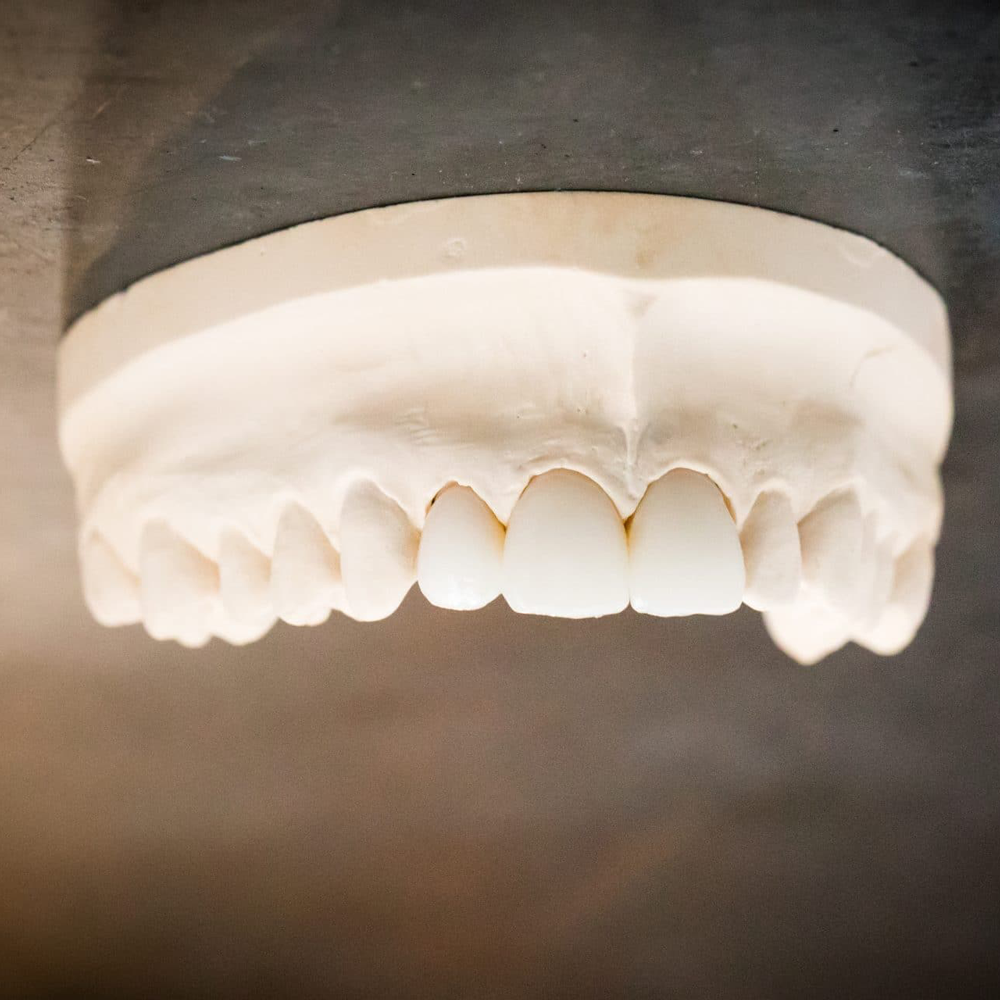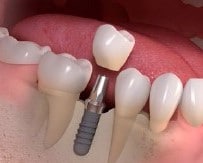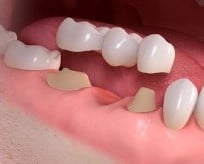Fixed dentures
Prosthodontics is the part of dentistry that deals with rebuilding decayed teeth or replacing missing ones.

What is a fixed dental prosthesis?
Anatomy and definition
The crown corresponds to the visible part of the teeth, located above the gums. Fixed dental prosthesis consists in artificially reconstituting, as close as possible to the natural state, the crown of a decayed or missing tooth.
Fixed dental prosthesis includes:
- Individual crowns
- Bridges (“bridge”)

Individual crowns
Individual crowns can be supported by a natural root, whether living or devitalized, or by a dental implant.
However, the preparation of a natural tooth for a crown requires a significant reduction of the coronal part of the tooth. This invasive procedure, which is not very conservative of tooth tissue, is nowadays only performed as a last resort, as new bonding techniques enable a much more conservative adhesive restoration.
Replacing a tooth with a dental implant and crown is one of the best solutions. The crown is usually screwed onto the implant.

Bridges
A bridge is the replacement of one or two missing teeth with crowns, supported by “abutment crowns” adjacent to the missing teeth. Today, these “abutment crowns” are usually supported by dental implants. Bridges over natural teeth are becoming increasingly rare, as they require invasive preparation of often intact adjacent teeth and, in the event of problems, are difficult to repair.
Fixed prosthetic materials
Crowns or bridges generally consist of two components:
New high-tech ceramics with lithium disilicate (E-Max Ivoclar) or monolithic zirconia offer a wide range of possibilities, enabling framework-free restorations that are both highly aesthetic and resistant, and generally less expensive than restorations with precious metal frameworks.